The American Ornithological Society (AOS) annually confers achievement awards on individuals and groups for their ornithological research and considerable contributions to the science and practice of ornithology, and for their service to our scientific society. Our 2025 awardees represent outstanding contributions to the scientific study and conservation of birds and to the AOS. The 2025 recipients will accept their awards at the AOS annual meeting (AOS 2025) in St. Louis, Missouri, in August.
AOS President Sara Morris remarks, “I am always impressed by the depth and breadth of the science completed and services performed by our award recipients, and this year’s awardees are exceptional. They provide models for others to continue contributing to ornithological science and to the ornithological community, and I look forward to congratulating them in person at our annual meeting.”
“Wow! I am always impressed and humbled by the accomplishments of people within ornithology—the incredible scientific research, meaningful and impactful conservation work, and service to our society to ensure others have opportunities to pursue science and build community,” says Judith Scarl, AOS Executive Director and CEO. “Congratulations to this year’s award winners—and thank you for the work that you do!”
Senior Professional Awards
The American Ornithological Society annually bestows three prestigious awards in recognition of outstanding contributions to ornithological science: the William Brewster Memorial Award, the Elliott Coues Award, and the Loye and Alden Miller Research Award.
William Brewster Memorial Award
The William Brewster Memorial Award is given each year to the author or coauthors of the most meritorious body of work (book, monograph, or series of related papers) on birds of the Western Hemisphere published during the past ten years. This year, the AOS is announcing two 2025 Brewster Awards: one to Kristen Ruegg and one to Hugh Drummond.
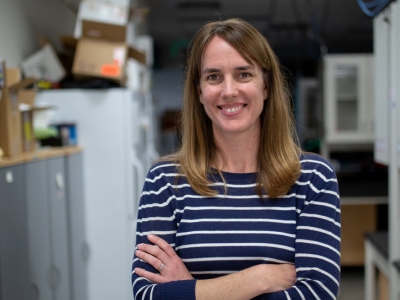
Kristen Ruegg, Ph.D., Associate Professor, Colorado State University
Dr. Kristen Ruegg is an associate professor of biology at Colorado State University (CSU) and serves as a co-director of the Bird Genoscape Project. She earned her Ph.D. from the University of California, Berkeley, and completed postdoctoral fellowships at Stanford University and the University of California, Los Angeles. In 2009, she co-founded the Bird Genoscape Project with Dr. Tom Smith, aiming to map the migratory routes of North American birds using genomic tools to aid in their conservation.
Ruegg’s lab at CSU focuses on understanding the mechanisms that generate and maintain species diversity in a changing world, with a particular emphasis on migratory birds. She specializes in applying genomic tools to address evolutionary and ecological questions, such as mapping migratory connectivity, exploring the role of migration in species diversification, and assessing how bird populations may need to adapt to climate change.
Ruegg is also an active member of the AOS, where she has served as an Elective Councilor, chair of the Conservation Awards Committee, and was a past recipient of an AOS Student Presentation Award. Beyond her scientific pursuits, she enjoys painting, finding parallels between the creative process and scientific discovery.

Hugh Drummond, Ph.D., Emeritus Researcher, Universidad Nacional Autónoma de México (UNAM)
Dr. Hugh Drummond is an emeritus researcher in the Institute of Ecology of the Universidad Nacional Autónoma de México (UNAM) in Mexico City. Formerly an English lawyer graduated from the University of Bristol in 1967, he has sustained a research program on Isla Isabel, Mexico, on the behavioral ecology of Sula nebouxii (Blue-footed Boobies) and other marine birds spanning forty years. Drummond has supervised 76 theses and is considered the founder of behavioral ecology in Mexico. He has published nearly 100 research articles on boobies and other marine birds in international journals, focusing on the evolution of family conflict. He was a member of the editorial boards of Ethology and Acta Zoológica Mexicana. Drummond is the author of the book, Blue-footed Boobies: Sibling Conflict and Sexual Infidelity on a Tropical Island (2023; Oxford University Press).
Follow Dr. Drummond’s research: Google Scholar
Elliott Coues Award
The Elliott Coues Award recognizes outstanding and innovative contributions to ornithological research with no limitation to geographic area, sub-discipline(s) of ornithology, or the time course over which the work was done. The AOS is bestowing two 2025 Elliott Coues Awards; one to Robb Brumfield and another to Ben Hatchwell.
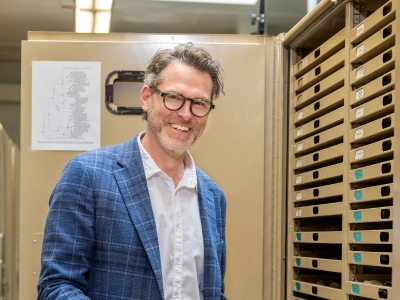
Robb Brumfield, Ph.D., Curator and Professor, Louisiana State University
Dr. Robb Brumfield received his B.S. from Louisiana State University, where his research focused on geographic variation in Andean wrens; his M.S. from Illinois State University, where his research focused on biogeography in northwestern South America; and his Ph.D. from the University of Maryland, where his dissertation focused on hybridization of manakins in Panama. During his Ph.D., he was a Research Fellow of the Smithsonian Institution. After completing postdoctoral work at the University of Washington, he became a curator at Louisiana State University in 2003, where he now serves as a curator in the Museum of Natural Science, a professor in the Department of Biological Science, and an associate dean in the College of Science. He has published more than 150 peer-reviewed papers on evolutionary biology. Within this area he uses phylogenomic, population genomic, and morphological data from vouchered research specimens to investigate higher-level avian relationships, the speciation cycle, hybridization, adaptation, evolution of secondary sexual traits, and genetic variants underlying phenotypic traits. Brumfield is a past winner of an AOS Student Research Award and was elected as an AOS Elective Member (2006) and then AOS Fellow (2011), was a member of the Bird Collections committee, and an associate editor for Ornithology (formerly The Auk).
Follow Dr. Brumfield’s research: ORCID
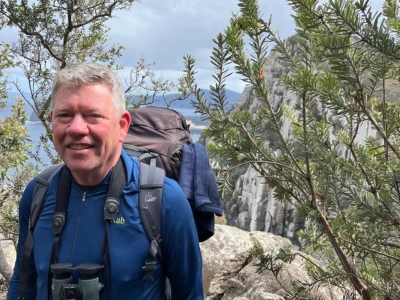
Ben Hatchwell, Ph.D., Professor of Evolutionary Ecology, School of Biosciences, University of Sheffield, UK
Dr. Ben Hatchwell studied zoology at the University of Oxford (1984) and obtained a Ph.D. at the University of Sheffield (1988) on seabird population biology. After post-docs in Cambridge on accentor (Prunellidae) mating systems and in Oxford on Turdus merula (European Blackbird) population biology, he returned to Sheffield as a lecturer (1993–present), becoming Professor of Evolutionary Ecology in 2007. Hatchwell’s main contributions are in behavioral ecology, using observational and experimental field studies of individually marked birds to ask questions about social evolution. A key system in his career has been a long-term study of Aegithalos caudatus (Long-tailed Tits) that began in 1994 and is still running. Their simple cooperative breeding system is ideally suited for the dissection of the causes and consequences of sociality, the rules governing cooperative decisions, and the role of kin selection. Other projects on cooperative breeding include studies of Philetairus socius (Sociable Weavers), Acanthisitta chloris (Rifleman), and comparative analyses of behavior. He retains an interest in population biology, continuing to work on seabirds and an invasive population of Myiopsitta monachus (Monk Parakeets).
Hatchwell has more than 160 publications (including in Nature, PNAS, and Nature Communications). He has supervised 35 Ph.D. students and mentored 20 post-doctoral researchers and research fellows. He was elected President of the International Society for Behavioral Ecology (2016–18) and was awarded the ASAB Medal by the Association for the Study of Animal Behaviour in 2023 for his contribution to the field.
Follow Dr. Hatchwell’s research: ORCID
Loye and Alden Miller Research Award
The AOS Loye and Alden Miller Research Award recognizes lifetime achievements in ornithological research. The AOS has selected Scott Robinson as the 2025 AOS Loye and Alden Miller Research Award winner.

Scott K. Robinson, Ph.D., Ordway Professor, Florida Museum of the University of Florida
Dr. Scott K. Robinson received his B.A. from Dartmouth College in 1978, and his Ph.D. from Princeton University in 1984. Currently, he is the Ordway Professor at the Florida Museum of Natural History of the University of Florida. Before that, he worked for the Illinois Natural History Survey and the University of Illinois. Robinson has worked extensively in both North and South America, and has students working all over the world. While at Dartmouth College, he was fortunate to be mentored by Richart T. Holmes while working at the Hubbard Brook Ecosystem Study, and by John Terborgh while attending Princeton University. Although he is primarily a community and conservation biologist, he also works on many behavioral ecological issues, especially with flocking species. For much of his career, his goal has been to understand the mechanisms underlying changes in bird communities and populations along environmental gradients, both natural (forest succession, precipitation, temperature, elevation) and anthropogenic (fragmentation, urbanization, agricultural). He has won past awards from Partners in Flight and universities in Peru.
Service Awards
The AOS offers two awards, the Peter R. Stettenheim Service Award and the Marion Jenkinson Service Award, to recognize AOS members who have provided continued, exceptional service to ornithology and to the society. This year, the AOS bestows Peter R. Stettenheim Service Awards to Sharon Gill and Brian Peer; and Marion Jenkinson Service Awards to Jennifer Walsh and Evan Adams for their dedicated service to the AOS.
Peter R. Stettenheim Service Award

Sharon Gill, Ph.D., Professor, Western Michigan University
Dr. Sharon Gill is a professor in the department of biological sciences at Western Michigan University. She first began to love birds while working as a field assistant during her B.Sc. at the University of Manitoba. She completed her M.Sc. there before attending York University for her Ph.D., followed by a postdoctoral fellowship at Princeton University. Gill explores sound across multiple scales, from individuals to the overall sound environment, working on both basic research and more applied questions. Her research group examines the evolution of functional reference in alarm calls and compositionality in call repertoires, as well as birdsong and the partitioning of acoustic space within bird communities. They also study human effects on natural sounds by considering the impacts of anthropogenic noise on singing behavior and soundscapes across nature preserves. Gill is a past winner of two AOS Student Research Grants (1993; 1998) and was elected as an AOS Elective Member in 2014 and AOS Fellow in 2017. Gill is also an interdisciplinary artist whose practice brings together ecology, fiber art, video, and performance in explorations of bird extinctions, environmental grief, and personal loss.
Follow Dr. Gill’s research: ORCID

Brian D. Peer, Ph.D., Professor, Western Illinois University
Dr. Brian D. Peer, received his Ph.D. in zoology from the University of Manitoba in 1998, and is currently a professor of biological sciences at Western Illinois University. He has made many contributions to the AOS (and the AOU) with his most significant being as a member of the Research Awards Committee. Peer has served on the committee since 2003, and was chair for 11 years until 2023. During that time period he reviewed more than 1,500 proposals and the committee operated like a well-oiled machine. Peer’s area of research expertise is avian brood parasitism and he was elected as an AOS Elective Member in 2003, and an AOS Fellow in 2014.
Marion Jenkinson Service Award
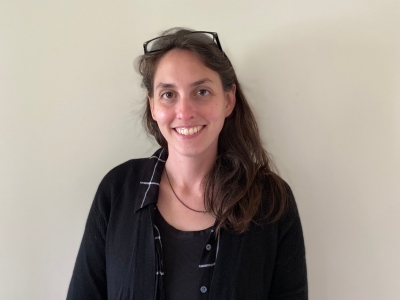
Jennifer Walsh, Ph.D., Research Associate, Cornell Lab of Ornithology
Dr. Jennifer Walsh received her Ph.D. from the University of New Hampshire and is currently a research associate at the Cornell Lab of Ornithology in the Fuller Evolutionary Biology Lab. She uses genomic approaches to study the evolution, adaptation, hybridization, and conservation of songbirds. Her work on Melospiza melodia (Song Sparrow), range-wide, has provided valuable insight into the role of local adaptation in structuring populations across micro-geographic scales, spanning both stark environmental and morphological gradients. Walsh previously won an AOS Ned K. Johnson Early Investigators Award (2020). She has been a member of the AOS since she was an undergraduate and has served on several committees including as chair of the the AOS Student Travel and Presentation Award Committee, a member of the Professional Ethics Committee, an Elected Councilor, a member of the AOS Meeting Coordination Committee, chair of the Scientific Program Committee for AOS meetings, and an associate editor for Ornithological Applications.
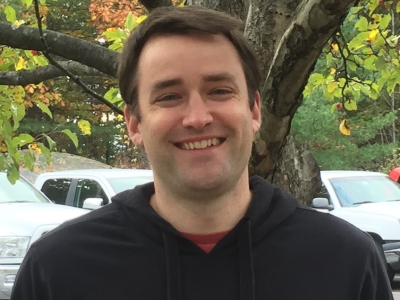
Evan Adams, Ph.D., Co-director of the Quantitative Wildlife Ecology Research Lab, Biodiversity Research Institute (BRI)
Dr. Evan Adams is the co-director of the Quantitative Wildlife Ecology Research Lab (QWERL) at the Biodiversity Research Institute, a nonprofit organization based in Maine. He studies the ecology of birds and bats, focusing on the effects of environmental change on animal movements, distributions, and communities. His recent work on the Maine Bird Atlas has emphasized data synthesis by combining participatory science with structured survey efforts to estimate population status and distribution changes for breeding birds. Further, his recent work on marine predator-prey interactions in the Northwest Atlantic explains trophic interactions among communities in a dynamic and complex environment. Connections from these efforts to conservation decision-making are made via decision science frameworks and co-production principles. Dr. Adams additionally contributes as the former chair of the Gulf of Mexico Avian Monitoring Network and is a member of the Regional Wildlife Science Collaborative’s Bird and Bat Subcommittee. For the AOS, he has chaired the Early Professional Committee, the Workshops Committee, and the Travel Grants and Student Awards Committee and has participated in the Meeting Coordination Committee since 2020. Like most ornithologists, Adams loves birding but also likes to fit in a round of disc golf when he can.
Follow Dr. Adams’ research: ORCID
Conservation Awards
The AOS Conservation Awards honor individuals or groups who have made exceptional contributions to conservation through applied research, on-the-ground conservation efforts, education, or partnership building. The Ralph W. Schreiber Conservation Award was initiated in 2005, and the Conservation Practitioner Award in 2023. These two awards allow the AOS to recognize a broader range of critical conservation activities, from science to action.
Ralph W. Schreiber Conservation Award
The AOS Ralph W. Schreiber Conservation Award honors extraordinary conservation-related scientific contributions by an individual or small team. Contributions from throughout the world and over any time period are eligible for this award, including applied research, restoration, and educational actions that conserve birds or preserve significant bird habitats; scientific examination of the principles of avian conservation and application of new insights into species restoration; and scientific evaluation, guidance, creation, and oversight of avian recovery programs or habitat reserve and restoration programs. The award is named for Ralph Schreiber, a prominent figure in American ornithology known for his enthusiasm, energy, and dedication to research and conservation, particularly of seabirds. The AOS is awarding the Ralph W. Schreiber Conservation Award in 2025 to David Wilcove.

David Wilcove, Ph.D., Professor of Ecology, Evolutionary Biology, and Public Affairs, Princeton University
Dr. David Wilcove is a professor of ecology, evolutionary biology, and public affairs at Princeton University and vice dean of the School of Public and International Affairs. The primary question driving his research is: How do we find room for biodiversity in an increasingly hot, hungry, and crowded world? Accordingly, his work focuses on the impacts of farming, logging, hunting, climate change, and other human activities on biodiversity, especially birds. Prior to joining Princeton’s faculty in 2001, Wilcove worked as a scientist for the Environmental Defense Fund, The Wilderness Society, and The Nature Conservancy. He is the author of two books and many peer-reviewed and popular articles in the fields of conservation biology, ornithology, and wildlife conservation. Wilcove serves or has served on the boards of directors of the Doris Duke Foundation, Society for Conservation Biology, Rare, American Bird Conservancy, Natural Areas Association, Galapagos Conservancy, and the New Jersey Audubon Society, among other organizations. He received his undergraduate degree from Yale University and his doctorate from Princeton University.
Conservation Practitioner Award
Now in its third year since its inception, the AOS Conservation Practitioner Award recognizes individuals or groups of biologists at any stage of their career for outstanding work in government agencies (from municipal, state, provincial, federal, or international levels) or nongovernmental organizations to further the conservation of birds. This award acknowledges the planning, on-the-ground, or day-to-day work of dedicated professionals addressing avian conservation issues at a local or regional scale. The AOS is awarding Felicia Sanders the 2025 AOS Conservation Practitioner Award.
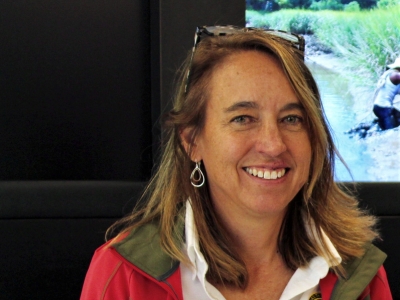
Felicia Sanders, M.S., Wildlife Biologist, South Carolina Department of Natural Resources
Felicia Sanders joined the South Carolina Department of Natural Resources (SCDNR) in 2001, and leads the state’s shorebird and seabird program. Sanders was instrumental in the designation of five seabird sanctuaries, which allows habitat protection to the low tide line. She collaborated with many partners, especially the U.S. Army Corps of Engineers, to rebuild Crab Bank, a now-thriving seabird sanctuary. Sanders discovered the world’s largest known roost of Numenius phaeopus (Whimbrel) on Deveaux Bank. Media coverage of this flock reached more than 10 million viewers and resulted in increased support for shorebird protection across the state. Sanders has mentored numerous graduate students and coauthored 40 scientific publications. She is one of the principal investigators in the Southeast U.S. researching Calidris canutus (Red Knot) migration strategies. Research revealed that most of the knots stopping in the Southeast fly directly to the Arctic, which led to significant conservation successes for knots. Sanders led the nomination process for two Western Hemisphere Shorebird Reserve Network sites. Most importantly Sanders worked with community members and partners to build resources and advocates to continue working on coastal bird conservation for many decades to come. In spring of 2025, she was awarded the Order of the Palmetto, the highest civilian honor awarded by the governor of South Carolina. In 2022, Sanders received SCDNR’s Meritorious Service Award, the agency’s highest award. She was the 2020 Biologist of the Year for the Southeastern Association of Fish and Wildlife Agencies. She received her M.S. in zoology from Clemson University and a B.S. in zoology from Duke University.
Publication Awards
Harry R. Painton Award
The AOS Harry R. Painton Award is given in odd-numbered years and is presented to the author of an outstanding paper published in the two preceding years in Ornithological Applications. The 2025 Harry R. Painton Award is presented to Eric Wood, lead author for the paper, “Historical racial redlining and contemporary patterns of income inequality negatively affect birds, their habitat, and people in Los Angeles, California.”
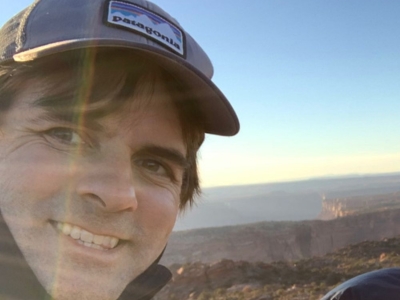
Eric M. Wood, Ph.D., Associate Professor, Cal State Los Angeles
Dr. Eric Wood is an associate professor in the department of biological sciences at California State University, Los Angeles, and a co-director of the Los Angeles Urban Ecology Center. He holds a Ph.D. in Forest and Wildlife Ecology from the University of Wisconsin–Madison, an M.S. in wildlife ecology and a professional certificate in remote sensing and GIS from Humboldt State University (Cal Poly Humboldt), and a B.S. in biological sciences from Cal Poly San Luis Obispo. Wood’s research focuses on avian and urban ecology, conservation biology, and landscape-scale responses of bird communities to climate and land-use change. His work has been published in top journals including Science, Nature Communications, and Ecological Applications, and has received more than 2,700 citations. His lab integrates field ecology with spatial analysis and community science to advance solutions-oriented research in biodiversity conservation. Wood is a research associate with the Natural History Museum of Los Angeles County and serves on the editorial board of Proceedings of the Royal Society B. He has received funding from the National Science Foundation, USDA, and numerous conservation agencies. Among his honors are the Aldo Leopold Outstanding Wildlife Graduate Student Award and multiple recognitions for mentoring students in ornithology and conservation. Wood loves trail running, swimming, birding, and telling bedtime stories featuring any truck to his three- and five-year-old sons and watching migrating warblers eat!
Abstract: The Home Owners’ Loan Corporation (HOLC) was a U.S. government-sponsored program initiated in the 1930s to evaluate mortgage lending risk. The program resulted in hand-drawn “security risk” maps intended to grade sections of cities where investment should be focused (greenlined areas) or limited (redlined zones). The security maps have since been widely criticized as being inherently racist and have been associated with high levels of segregation and lower levels of green amenities in cities across the country. Our goal was to explore the potential legacy effects of the HOLC grading practice on birds, their habitat, and the people who may experience them throughout a metropolis where the security risk maps were widely applied, Greater Los Angeles, California (L.A.). We used ground-collected, remotely sensed, and census data and descriptive and predictive modeling approaches to address our goal. Patterns of bird habitat and avian communities strongly aligned with the luxury-effect phenomenon, where green amenities were more robust, and bird communities were more diverse and abundant in the wealthiest parts of L.A. Our analysis also revealed potential legacy effects from the HOLC grading practice. Associations between bird habitat features and avian communities in redlined and greenlined zones were generally stronger than in areas of L.A. that did not experience the HOLC grading, in part because redlined zones, which included some of the poorest locations of L.A., had the highest levels of dense urban conditions (e.g., impervious surface cover), whereas greenlined zones, which included some of the wealthiest areas of the city, had the highest levels of green amenities (e.g., tree canopy cover). The white population of L.A., which constitutes the highest percentage of a racial or ethnic group in greenlined areas, was aligned with a considerably greater abundance of birds affiliated with natural habitat features (e.g., trees and shrubs). Conversely, the Hispanic or Latino population, which is dominant in redlined zones, was positively related to a significantly greater abundance of synanthropic birds, which are species associated with dense urban conditions. Our results suggest that historical redlining and contemporary patterns of income inequality are associated with distinct avifaunal communities and their habitat, which potentially influence the human experience of these components of biodiversity throughout L.A.
Follow Dr. Wood’s research: ORCID
Citation:
Wood, E. M., S. Esaian, C. Benitez, P. J. Ethington, T. Longcore, and L. Y. Pomara (2023). Historical racial redlining and contemporary patterns of income inequality negatively affect birds, their habitat, and people in Los Angeles, California. Ornithological Applications 126:duad044.
Florence Merriam Bailey Award
The Florence Merriam Bailey Award—named for the first woman associate of the American Ornithologists’ Union (AOU) in 1885, who was also the first woman elected as a Fellow of the AOU in 1929—recognizes an outstanding article published in Ornithology or in Ornithological Applications by an early-career AOS member. The 2025 recipient of the Florence Merriam Bailey Award is Henry Stevens, lead author of the 2022 paper, “Species-specific ecological traits, phylogeny, and geography underpin vulnerability to population declines for North American birds,” which was published in the AOS journal Ornithological Applications.

Henry C. Stevens, Ph.D. Candidate, Georgetown University
Henry C. Stevens’ journey in ornithology began when he took Rich Aaronian’s ornithology course at Phillips Exeter Academy. After taking a gap year to work as an avian technician in Belize, Stevens began his undergraduate work at Tufts University. At Tufts, Stevens worked in Michael Reed’s conservation ornithology lab on a project with the Western Hemisphere Shorebird Reserve Network to improve the identification of sites critical for shorebird conservation. Between academic years, Stevens worked as a National Science Foundation (NSF) Research Experiences for Undergraduates (REU) participant at the Sevilleta National Wildlife Refuge in New Mexico with the threatened Vireo vicinior (Gray Vireo), and as a Gavia immer (Common Loon) biologist in his home state of New Hampshire. After receiving a joint B.S in biology and environmental science from Tufts University, Stevens first managed the Reserva Las Tangaras field station in the cloud forests of Ecuador, and later managed a tern colony in Buzzard’s Bay, Mass., focused on the recovery of Sterna hirundo (Common Tern) and Sterna dougallii (Roseate Tern). Since 2020, Stevens has been pursuing a Ph.D. in biology at Georgetown University working under Pete Marra on the full annual cycle biology of migratory birds. Specifically, Stevens uses migratory connectivity to understand the distributional responses of Setophaga ruticilla (American Redstart) to past, present, and future global climate change. Stevens is set to defend his doctoral dissertation at the end of the 2024–2025 academic year. He was previously awarded an AOS Student Research Award (2022) for his Ph.D. work with S. ruticilla. Stevens once hiked from the north coast to the south coast of Iceland to record bird communities.
Abstract: Species declines and extinctions characterize the Anthropocene. Determining species vulnerability to decline, and where and how to mitigate threats, are paramount for effective conservation. We hypothesized that species with shared ecological traits also share threats, and therefore may experience similar population trends. Here, we used a Bayesian modeling framework to test whether phylogeny, geography, and 22 ecological traits predict regional population trends for 380 North American bird species. Groups like blackbirds, warblers, and shorebirds, as well as species occupying Bird Conservation Regions at more extreme latitudes in North America, exhibited negative population trends; whereas groups such as ducks, raptors, and waders, as well as species occupying more inland Bird Conservation Regions, exhibited positive trends. Specifically, we found that in addition to phylogeny and breeding geography, multiple ecological traits contributed to explaining variation in regional population trends for North American birds. Furthermore, we found that regional trends and the relative effects of migration distance, phylogeny, and geography differ between shorebirds, songbirds, and waterbirds. Our work provides evidence that multiple ecological traits correlate with North American bird population trends, but that the individual effects of these ecological traits in predicting population trends often vary between different groups of birds. Moreover, our results reinforce the notion that variation in avian population trends is controlled by more than phylogeny and geography, where closely related species within one region can show unique population trends due to differences in their ecological traits. We recommend that regional conservation plans, i.e. one-size-fits-all plans, be implemented only for bird groups with population trends under strong phylogenetic or geographic controls. We underscore the need to develop species-specific research and management strategies for other groups, like songbirds, that exhibit high variation in their population trends and are influenced by multiple ecological traits.
Follow Dr. Stevens’ research: ORCID
Citation:
Stevens, H. C., A. C. Smith, E. R. Buechley, Ç. H. Şekercioğlu, V. Shirey, K. V. Rosenberg, F. A. La Sorte, D. Tallamy, and Peter P. Marra (2023). Species-specific ecological traits, phylogeny, and geography underpin vulnerability to population declines for North American birds. Ornithological Applications 126:duad046.